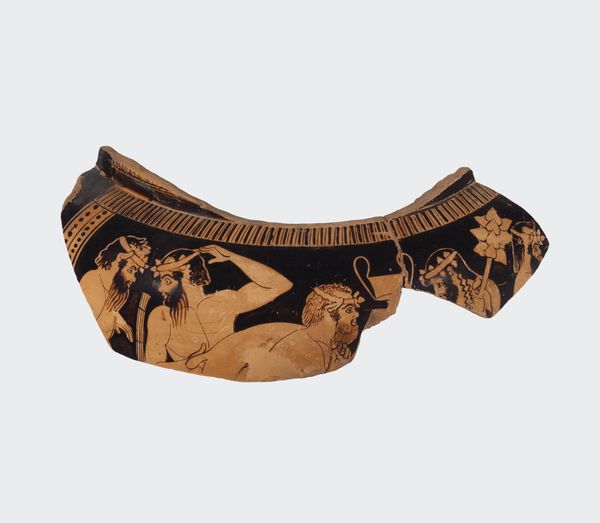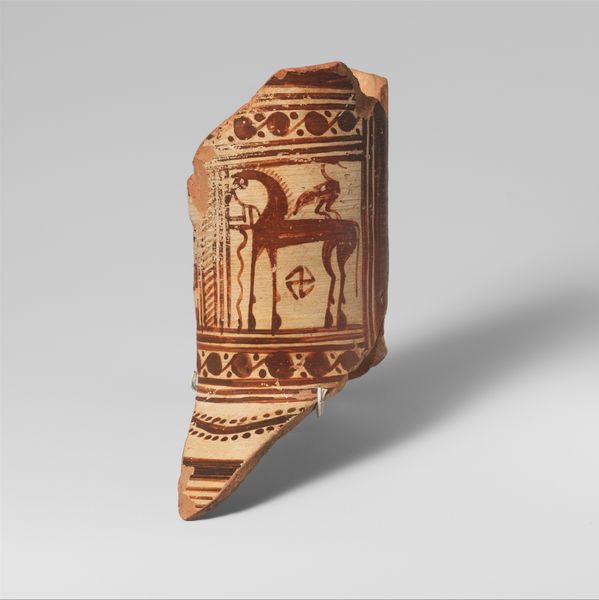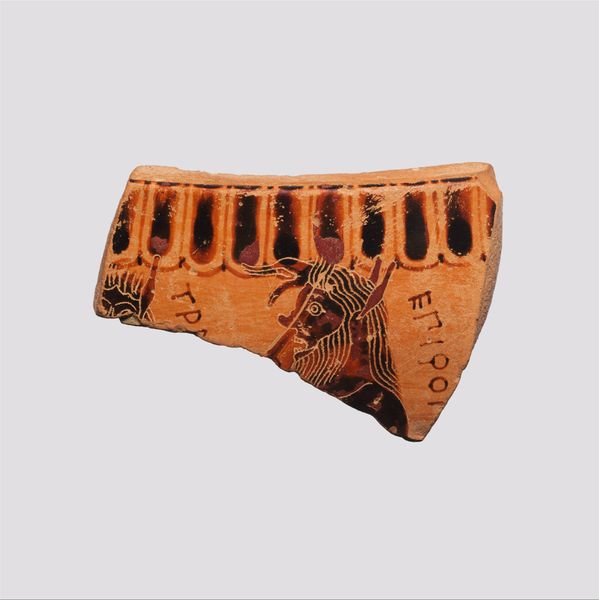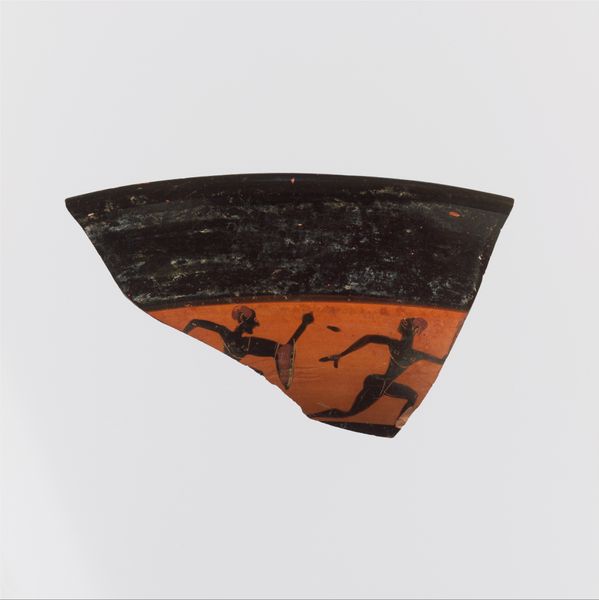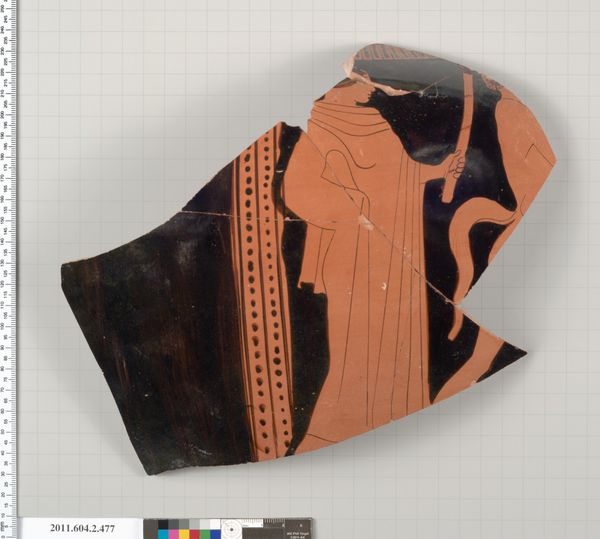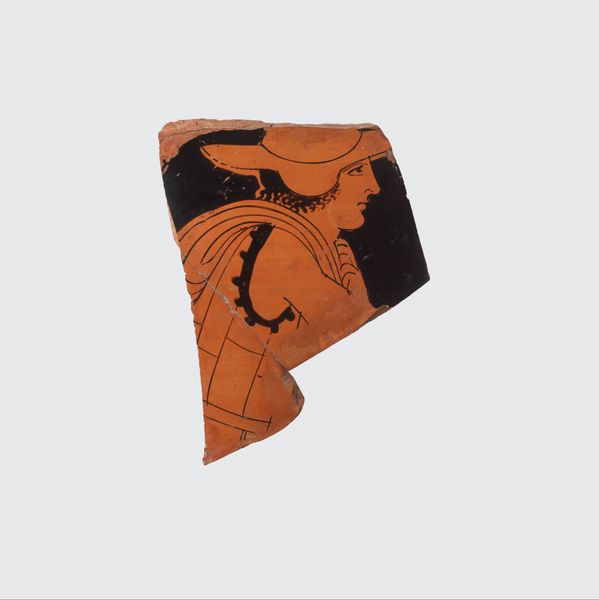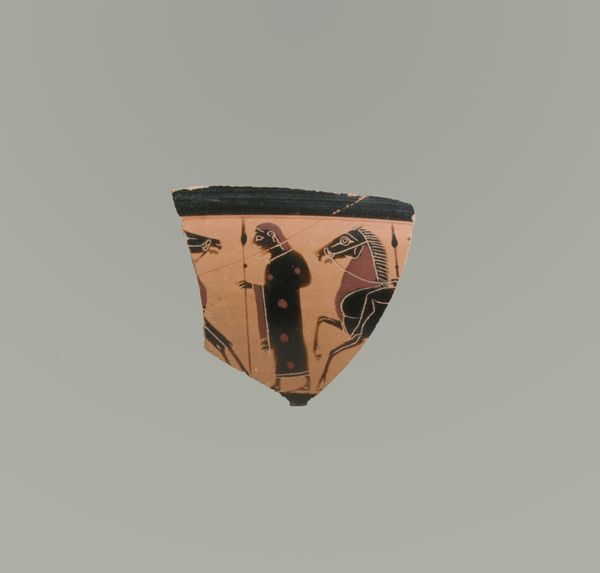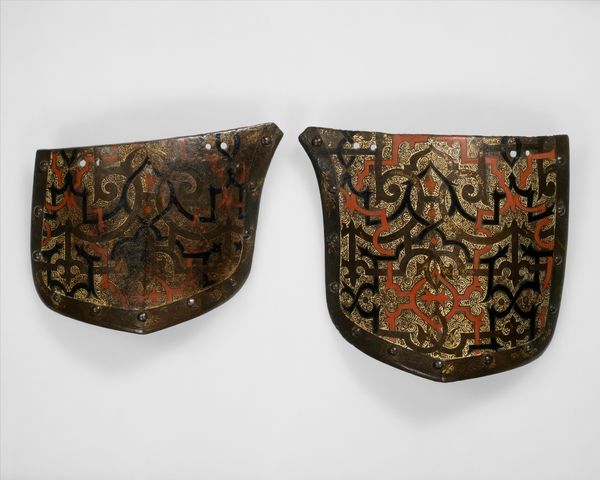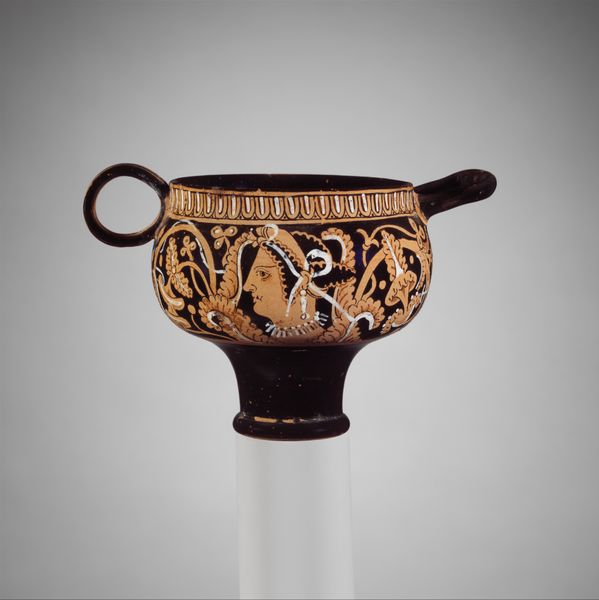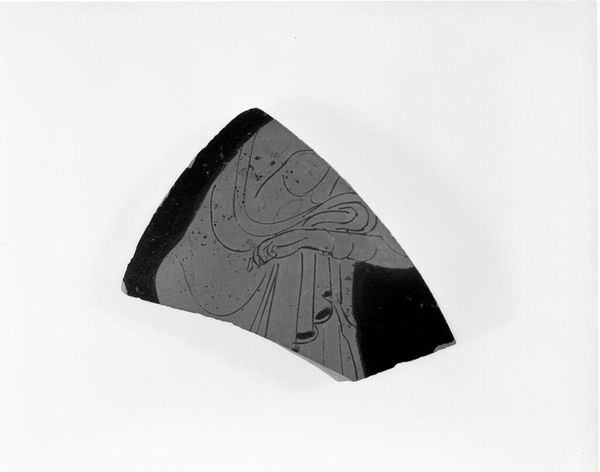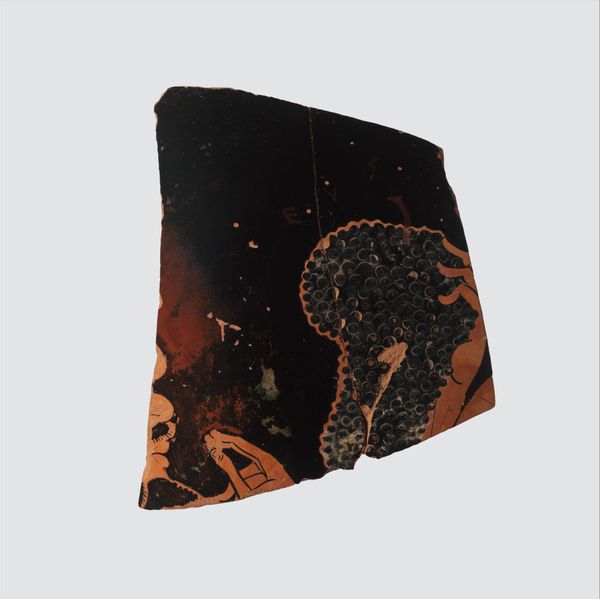
Fragment of a terracotta calyx-krater (bowl for mixing wine and water) 450 BC
0:00
0:00
drawing, ceramic
#
portrait
#
drawing
#
greek-and-roman-art
#
ceramic
#
vase
#
figuration
#
roman-art
#
ancient-mediterranean
Dimensions: H. 4 5/16 in. (11 cm) length 6 3/8 in. (16.2 cm)
Copyright: Public Domain
Curator: Here we have a fragment of a terracotta calyx-krater, dating back to around 450 BC. Editor: Oh, wow. It's like holding a whisper from antiquity. It’s damaged, obviously, but so serene. All that black! Feels meditative, almost like a tiny, broken void staring back. Curator: Indeed. This piece, currently held at the Metropolitan Museum of Art, would originally have been used to mix wine and water, an essential ritual in ancient Greek society. Editor: Mixing wine and water—tempering joy with wisdom, eh? This fragment shows a woman's head and torso, but just that bit. Curator: Yes, and consider its potential context. Calyx-kraters were centrepieces for symposia, or drinking parties. The imagery they bore served as conversation starters, loaded with social and political significance. It’s all wrapped up in their rituals and status. Editor: Like icebreakers on steroids! And look at that laurel leaf design—crisp, stylized. It seems a world away, and yet the skill jumps out. Imagine what the complete vase would've been like, all that narrative potential now scattered. This surviving sliver feels strangely precious. Curator: Absolutely, that stylized aesthetic spoke of refinement, order—a clear link to Athenian cultural values. These weren’t simply vessels but carriers of ideology, designed to shape behaviour and perception within elite circles. Editor: Funny to think that something broken, incomplete, can hold so much power, isn't it? Makes you wonder about all the untold stories embedded within this pottery shrapnel. I will not think about having that broken beauty reassembled. Curator: Precisely, it invites speculation about both individual lives and larger historical trends, encouraging new dialogues. Editor: Well, that piece certainly spoke to me; almost urging that brokeness makes one look inwards. Curator: Agreed; fragments such as these enrich our engagement with art from so long ago.
Comments
No comments
Be the first to comment and join the conversation on the ultimate creative platform.
